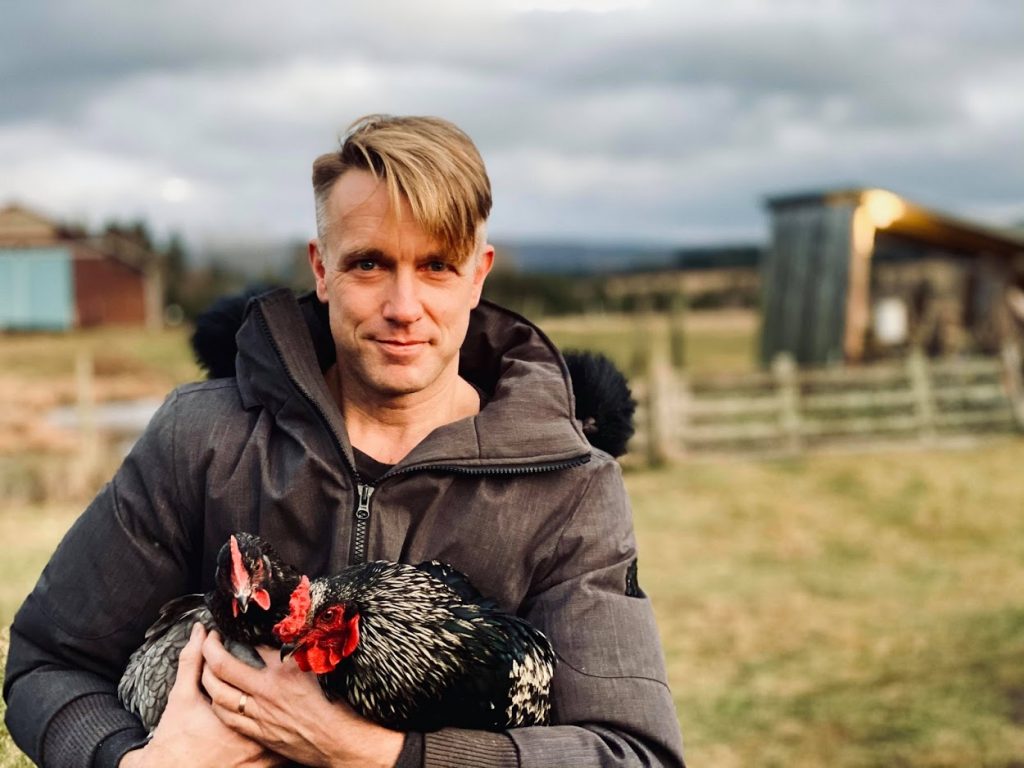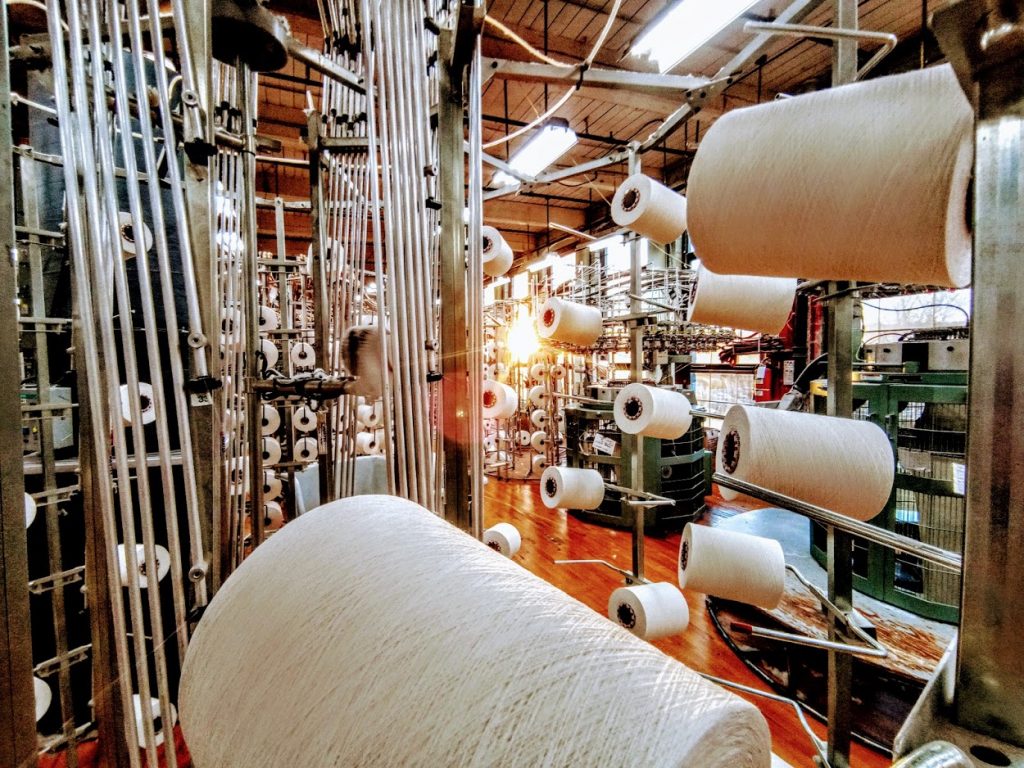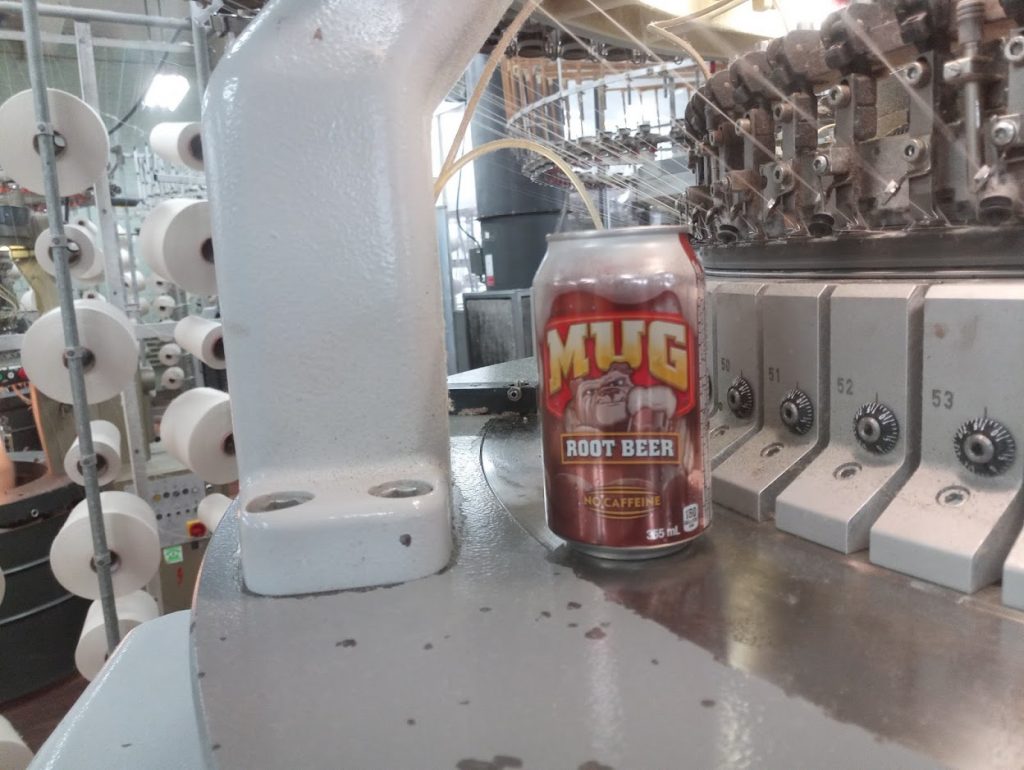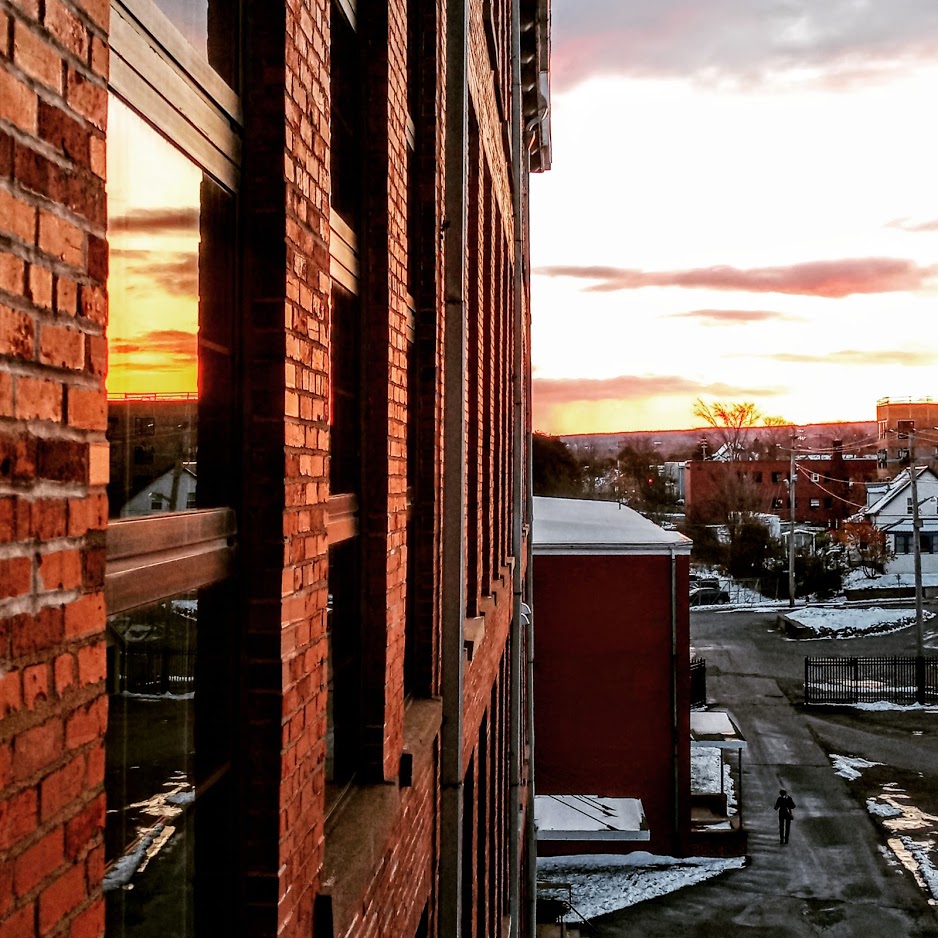Interview with circular knitting influencer Thom H. Boehm: “I’ve made my job what I wanted it to be”
On social media, Thomas H. Boehm refers to himself as “the thinking man’s circular knitting machine mechanic”, along with “chicken whisperer” and “facilitator”. Based in Nova Scotia, Eastern Canada, he talks about his life, work and thoughts. With great enthusiasm, he tells stories about the machines to which his work has introduced him many years ago and of which he has grown very fond. Today, hundreds of people follow Thom’s stories about his circular knitting machines. Most of the machines in his care are nearing impressive anniversaries but are still up and running, thanks to his eagerness to learn, his loving maintenance and expertise.
You have made an impressive career on social media, particularly on LinkedIn. You’ve got a few thousand followers there. That makes you a circular knitting influencer, probably the world’s only one. How did you become what you are?
Let’s see … We are the only textile mill in Eastern Canada, there’s no opportunity for me to expand. But I like the job, I’ve always loved machinery. In the past, it was a tough place to work at. The staff was close-knit and hard to get to know. Especially the older fellows were defensive about me, probably because I’m not your typical Canadian factory worker.
So social media gave me an outlet, an outlet to interact with other people and ask questions. It was also handy sometimes: I could reach out to someone else in the industry and ask them about their experience and how to handle a certain problem with machinery.
When I started writing articles, I could make my voice heard in my company through LinkedIn. In the analytics, you can see who reads your articles. I could express my opinion on things that otherwise I wouldn’t have the opportunity to. It always gave me a chance to get myself involved in a way that otherwise would have been impossible.
“I’m still a bit of an enigma there.”
To this day, I’m still a bit of an enigma there. They don’t quite know what to do with me. In Canada, if you don’t have a university degree you are considered a lower level worker and you won’t get past a certain barrier. I’ve definitely made myself a niche and I know my efforts are appreciated.
Does your employer appreciate the fact that they have a corporate influencer? On the other hand, you do not hold back with your opinion, do you?
Yes, there are mixed feelings, I guess. In 2015, a British textile journal, Knitting International, contacted me to and asked whether I could write an article about our company. I was wondering if I should ask permission and finally decided not to. I wrote the article, they published it and paid me 400 dollars. When the printed magazine came back, I gave a copy to one of the owners. I don’t know how it was received as I tend to be too honest with my thoughts sometimes; anyway, I’m proud of it.
Jon Stanfield, the owner’s son and our president now came through about six months ago with a businessman. I was working at a machine when he introduced me to the visitor and said, “this is our local social media expert. He almost always says good things about the company.” Almost always (laughs).
“Writing was really good for my thought process.”
Anyway, I’ve made my job what I wanted it to be. In a job with no opportunity for growth, LinkedIn gave me a way to expand in a different direction. I had never written anything before I started doing LinkedIn and did my own articles. It was really good for my thought process. Thinking about what I want and how I take decisions. Putting it down in words really clarified my thoughts. It gave me an opportunity for growth that my job definitely doesn’t give me.
Your using this opportunity very well, as far as I can tell. When I mentioned you to some of my colleagues, they all knew you. They all read your stories.
Yes, that’s my game and I enjoy it. For a while, I dug in old online newspapers searching for old Stanfield’s ads and I posted what I found. Then our sales guy came to me and asked me where I got all those old ads. For a second I thought, “I don’t want to tell you”, but of course, I downloaded them all into a file and gave it to him. They had been looking in Stanfield’s archives for old ads and couldn’t find any – not realising that they had all been there on online newspapers. After I had given them my findings, they started a campaign based on the old ads.
Lately, I started picking a machine and doing a story about it. Because they all have stories to them and I know all the machines I work on regularly quite well. There’s always something you can share about them. Our sales staff also focus on stories now. We are such an old company with a rich history. There are so many stories to tell!
We’ve been speaking of stories: What’s your favourite story about a Mayer & Cie. machine?
Let me think… We got three new Mayer machines, which came to the mill about 15 years ago. I was still knitting when they came and replaced three older 30-inch Mayers. Anyway, the mechanic of the time, a nice guy and good mechanic – in his day – didn’t understand the Mayers’ computerized oiler system. Within a year, he had disconnected they oil lines from up top where they go into the cylinder and into the dial. Instead, he had a root beer can sit on each machine, so that the oil would go into that root beer can. He would then hand-oil the machines.
“The oil would go into a root beet can.”
They ran like this until he retired. Sometimes, when the machines stopped, I would see him lick his thumb and run it across the screen of the control unit to make the error message go away… After he had retired, I hooked up all the oilers, there was nothing wrong with them, I only had to change some of the oil jets, but they all worked fine.
That sounds like a rough treatment. Did the machines produce fabric at all?
Yes, sort of. Our lycra machine, a 30-inch machine with lycra in it, he used to run it no faster than 11 rpm. That’s as fast as it would go. What made it worse was that it mostly ran on wool yarn. I found the wool fibre would grab the lycra out at such a slow speed. When I run it now and I’m in hurry to get an order finished I run it at up to 25 rpm.
What did you do to it to run it faster, except for the oilers?
The oil was the main problem, I’d say. I took a really good look at the machine after the old mechanic had retired. Because the oiler had been disconnected for a long time, many places had gotten plugged up. They had to be cleaned, same as the entire machine. But there wasn’t much wrong with it.
So setting up the oiler again doubled the productivity.
Yes, although productivity wasn’t the main issue. Right, my day is busy, so running it faster makes my life easier, but the main problem was the lycra, which came out at that slow speed. In every roll, you’d have two or three meters with the lycra out. If you walked away, the lycra would come out. You’d have to go back, put the lycra back in. Next time you looked, maybe the lycra was in, maybe it was out. Every roll had a section that had to be cut out. Today, unless a slub goes through, the lycra stays in and you get your fabric all right. This is one of the machines I like to run myself, by the way. People aren’t gentle enough with the wheels and the lycra. It’s a 30-inch Mayer rib machine, a FV 2.0. I did a post on that one some time ago…
What is it that fascinates you about circular knitting machines?
Well, I’ve liked machines since I was little. When I was four years old, I took apart the kitchen mixer and tried to put it back together. I took many things apart! So, yes, I like knitting machines, but could get a fancy for other machines, too. Clocks maybe. When we lived in Japan, I collected clocks and we still have too many clocks in our house. If I could do anything, more than being a circular knitting machine mechanic, I’d love to be an horologist, fix watches and clocks. But I don’t think my eyes are good enough any more … Anyway, I love to see and understand how things work. With circular knitting machines, there’s so much to look at, so much to see and to understand.
“I could get a fancy for other machines, too.”
Take my fleece machine that came from Nova Scotia Textiles in Windsor, when they went out of business. Rumour has it they went out of business because of my fleece machine. They had a contract for Roots and what was left of the company was making this Roots contract. But the fleece machine was producing poor fabric, which made Roots cancel the contract. The company went under and we purchased some of the Vanguard machines. I was a knitter then.
When I took over the fleece machines and had to do the setup, I sometimes would have to make a few bad rolls of fabric. That was normal, even for the mechanic who was there before me – knit a few bad rolls just to get it running so it wouldn’t make holes or drops. That was because everything was so out of whack, the guides and everything. Over time, I had to learn where the cams and sinkers had to go to make it go without holes or drops. Now, I know what to do and I don’t make much bad fabric anymore. This is the machine I don’t want anybody else to touch. Because people like to turn things and if they don’t know what they turn, it will take me a while to get it back where it’s supposed to be.
From what you’ve told us, it sounds like you are the circular knitting whisperer. On your profile, it says something about a chicken whisperer and facilitator too. What is that about?
I have a connection from Australia and he called me the “thinking man’s circular knitting machine technician”. That’s what I used to have on my title for a long time. Then, Nova Scotia went on a one-month lockdown last summer, when Covid first started. I went down to the sewing room, when they reopened, and asked if they could use me. They were making PPEs. Knitting was still closed and I wanted to help out, so they put me on the sewing line. In the beginning, I wasn’t really happy because I thought I could do more than that. My job was to put a black dot on the gown where the tie goes. In fact, though, it was great, because there were eight of us in the line and we went in a flow. I didn’t want to go back to knitting because it was so much fun. For the first few weeks, I worked with older Standfield’s workers, a bunch of older women, who’d sewn there for 25 or 30 years, they were great. After I had gotten over my sulking of having to do something that seemed boring, they taught me every sewing job on the line. When the older women left, we got a bunch of young high school students. They were great workers too. It was quite an experience for me!
Is this where the chicken comes in, the chicks?
Oh no, I’ve got chickens in my backyard! I was telling you this story because of the facilitator. Everybody in the line came to me: Even if they needed something from management, they came to me and I talked to them. So this where the facilitator came in. I realized that’s what I really enjoy doing – if I’m not fixing circular knitting machines, I really enjoy giving other people what they need to do their job. It was fun really to work with people, not just machines. Machines never talk back to me and they are not nearly as stressful as people, but it was great fun working and talking with people for a summer.
“Machines never talk back to me.”
Okay, so let’s go back to the machines and talk about them some more. How many machines do you look after?
We’ve got around 100 machines there but many of them are hardly used any more. The other day, I ran machine # 51, which is an 18 cut Mayer rib machine, one of the older ones. It runs maybe twice a year producing only one certain type of fabric, a plain rib fabric. It’s fire retardant, so it’s probably used for fire departments. They make hoodies and other apparel stuff out of it. When we get an order from them, we put the machine to use. Once finished, I take the yarn off and tie it off. It sits there until a new order comes in for it and I put it back on. It only runs at a slow speed and takes an hour to produce a roll, but it works well.
Can you please tell us some more about your company, so we understand why the machines are not in use any more?
The company is downsizing its knitting department. We don’t produce nearly as much as we used to. When I started working there 19 years ago, every machines had orders on it. Now, the machines with orders on it are scattered through the room. The volume definitely is down, because the large volume orders are gone, simply because the companies we got them from are now longer there. Plus it has become cheaper to buy fabric than to produce it ourselves. We blend stuff that is made overseas with what we make ourselves. In terms of our own production, we still make a lot of briefs and t-shirts. Thermal and the coarse fabrics come from our own production too. Anything special, we usually make ourselves because it’s harder to order from overseas. The stuff that we can order a ton we get somewhere else at a cheaper price.
One last question: If you could design your perfect circular knitting machine – what would be its key features and characteristics?
To be honest, that’s a tough question for me. All I know about circular knitting machines is what I experienced, what I know from Stanfield’s. Of course, I look at the posts, but a lot of the machines that I see running, be it Mayer or Monarch, I can’t even wrap my head around how they do what they do. I’d love to know more, I’d love learn more so that I could give you an intelligent answer to that question.




Address
Mayer & Cie. GmbH & Co. KG
Emil-Mayer-Strasse 10
D-72461 Albstadt
Mailing address:
P.O. Box 201580
D-72438 Albstadt
Phone +49 (0)7432 700-0
Fax +49 (0)7432 700-362
info(at)Mayercie.com
© Mayer & Cie. | 2020 |

